Topic: Humour

Using the Bayonet
The Toronto World, 2 May 1915
Of all the weapons employed in modern warfare, the most useful is undoubtedly the bayonet. The rifle may be more effective at 100 yards; the heavy artillery more adaptable for knocking down a Dardenelle the Maxim gun for shooting small game for the pot. But, for general utility, give my kind regards to the bayonet, says Ashley Stern in London Opinion.
In order to fully appreciate its manifold beauties, the best plan is to procure one and gaze long and earnestly at it. This may be done in two ways: by enlisting, and thus obtaining the loan of one for the period of the war or three years; or by asking the sentry outside Buckingham Palace to lend you his rifle.
For argument's sake, I will assume that you have failed to pass the censor for the army, and have had perforce to adopt the second method. A close examination of the rifle will now reveal to you that at the end of the barrel there is affixed a long spike made of steel. In this spike there is a groove, and if you run your finger—any finger will do—along this groove in an upward direction you will come to the end of it. This end is called the point, and is very sharp. It will go through anything. I once saw one that had gone through the entire South African war. The point broadens downwards into edges, which are also very sharp, and will cut through a slab of unadulterated margarine as if it were so much fresh butter as per contract. This, then, is the bayonet.
Contrary to what you may expect it is not fired from the rifle. Neither is it hurled through the air like a javelin, nor yet detached and used as a dagger. When required for action it remains indelibly fixed to the end of the barrel, and is manipulated by grasping the rifle in both hands and jabbing the sharp point into whatever it may be into which you desire to jab it. I am told by those who have experienced a bayonet jab that it is exceedingly uncomfortable; and one doughty warrior of my acquaintance, who is at present engaged in growing a moustache—if not exactly for England and home, at any rate for beauty—and whose fatter calf was punctured at bayonet practice by the energetic gentleman immediately behind him, has informed me that on future occasions, unless he be permitted to rehearse alone in the centre of the parade ground, he will pay an extra half-crown and have gas.
So much for the bayonet from the offensive point of view. As such you will probably have observed that its scope is somewhat limited. In short, it can merely be jabbed in and pulled out. But it is an article of general utility, rather than as a weapon, that its remarkable versatility is displayed. It makes, for example, an excellent toasting fork. Practically any sort of provender may be thus treated at the bayonet's point. A notable exception is the domestically constructed crumpet of the kind that Cousin Connie's constantly cooking for corporals. More bayonets have been blunted by attempts to impale these delicacies than by any other means, and there is a large staff at Woolwich Arsenal ceaselessly employed with their noses to the grindstone in repointing them.
As a tin-opener the value if the bayonet would be hard to over-estimate. Anybody who has had experience of the elusive and untrustworthy habits of tin-openers can testify to their inability to cope with anything made of more robust material than cigaret-paper. This has long been a national disgrace; but the war office, I am happy to say, has now recognized the inefficiency of the ordinary implement, and had approved the appointment of the bayonet to the honorary post of official tin-opener to the army. Thus there is no longer any fear that when Sister Sarah's sending sardines off to sergeants there will be any reluctance on the part of the tin to disgorge its oleaginous contents.
Then, too, as a pencil sharpener, a letter-opener, a hat-peg, a croquet-stick, a meat-skewer, and (when heated to red-heat) a salamander, the bayonet has been known to do yeoman service. A couple of them affixed to the heels of a cavalryman's boots will even—at a pinch—make very effective emergency spurs. But probably the most unique office ever filled by a bayonet is that shown in the following incident.
When the Honorary Infantry Company (known as the H.I.C., and not to be confused with the H.O.C. or H.A.C.) acted as a guard of honor on the occasion of the unveiling of a new section of the Tube, a strong wind was blowing, causing one unfortunate man's busby (which only fitted his head at rare intervals) to assume and angle of 45 degrees to the horizon. Twice had the officer in command threatened to mention his in dispatches for slovenliness of headgear, and a third caution he knew would means his being led out in front of the ranks, deprived of his watch and chain and loose cash, and riddled with blank cartridges as per King's Regulations, Vol. 3, Act 2, Scene 4. However, when the officer had gone to lunch, the owner of the recalcitrant busby was seized with a bright idea. Snatching his bayonet from its socket, he thrust it through his busby in such a manner as to gather up with it a quantity of his hair, which fortunately chanced to be standing on end through fright. The result was that his busby remained for the whole of the performance in a state of stable equilibrium, and although this is the only recorded instance of the use of the bayonet as a hatpin, the incident serves, I think, to show that its uses are not yet exhausted. Indeed, I quite expect to hear before very long that some ingenious soldier at the front has split the point of his and converted it, with the aid of a set of bagpipes, into a fountain pen.


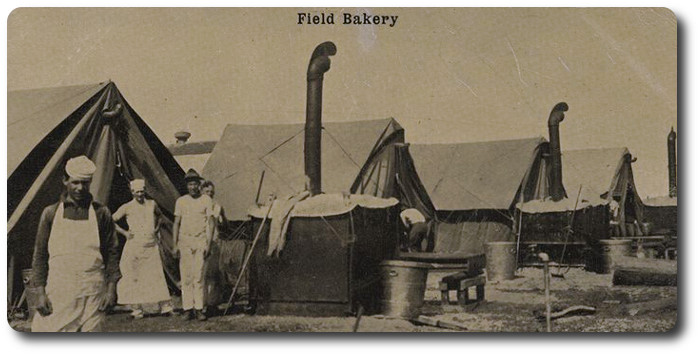
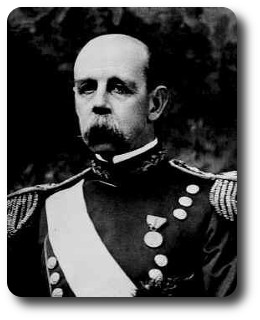 The Commissary Department of the Army of the United States has been brought to perfection and the American soldier is better fed than the man who bears arms under any other flag on earth.
The Commissary Department of the Army of the United States has been brought to perfection and the American soldier is better fed than the man who bears arms under any other flag on earth.


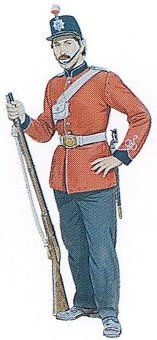 Headquarters
Headquarters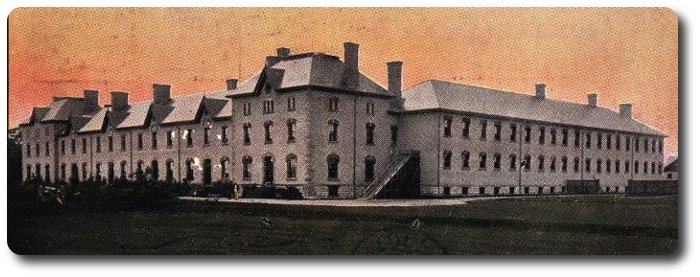
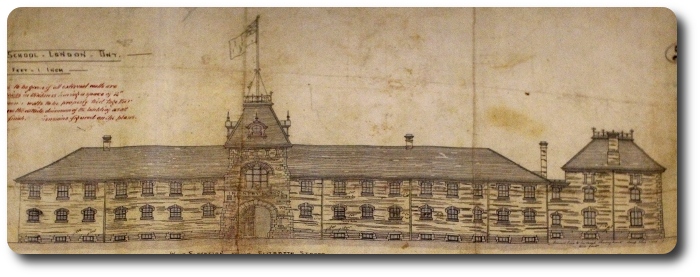
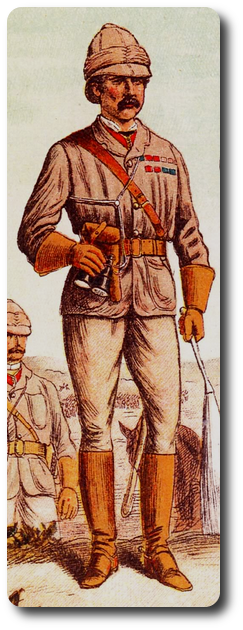 In 1867, there came to Canada, as the senior Staff Officer, a brilliant young soldier who, though but 34 years of age, had already seen service in the Crimea, at the Relief of Lucknow and in China, and who, in 1870, was chosen by Ottawa to command the Red River Expedition to the then almost unknown Canadian West, where the rebel Louis Riel headed an uprising to establish a Republic of North-West Canada.
In 1867, there came to Canada, as the senior Staff Officer, a brilliant young soldier who, though but 34 years of age, had already seen service in the Crimea, at the Relief of Lucknow and in China, and who, in 1870, was chosen by Ottawa to command the Red River Expedition to the then almost unknown Canadian West, where the rebel Louis Riel headed an uprising to establish a Republic of North-West Canada.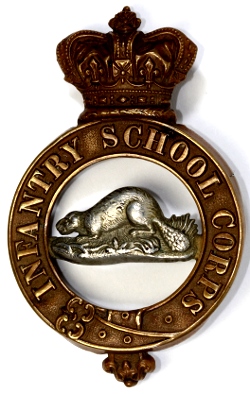 The School was formerly opened on the 31st March, 1888, with Colonel Henry Smith, a veteran of the North-West Rebellion of 1885, as Commandant, and the barracks became headquarters of "D" Company, Royal Infantry (sic). The establishment of the School was six Officers and one hundred N.C.O.'s and men, many of whom were recruited locally; and then started the first courses of instruction.
The School was formerly opened on the 31st March, 1888, with Colonel Henry Smith, a veteran of the North-West Rebellion of 1885, as Commandant, and the barracks became headquarters of "D" Company, Royal Infantry (sic). The establishment of the School was six Officers and one hundred N.C.O.'s and men, many of whom were recruited locally; and then started the first courses of instruction.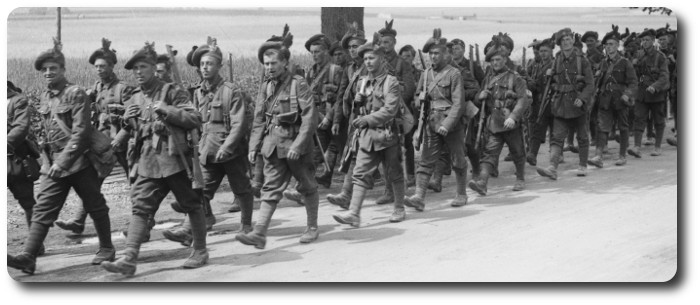
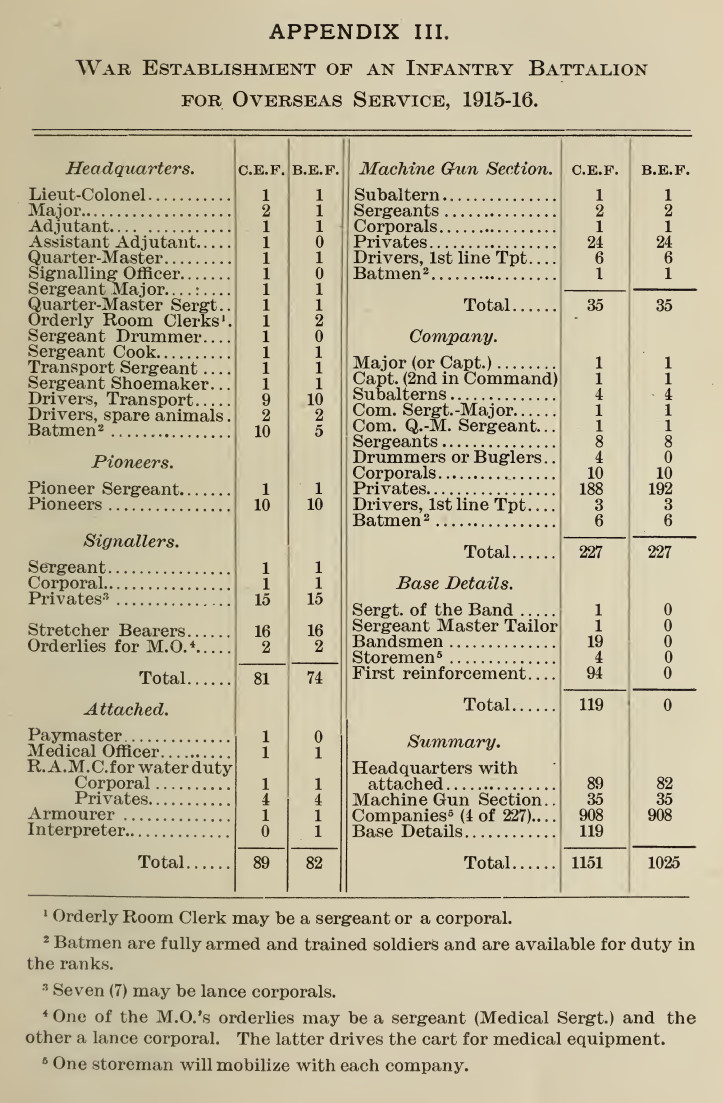
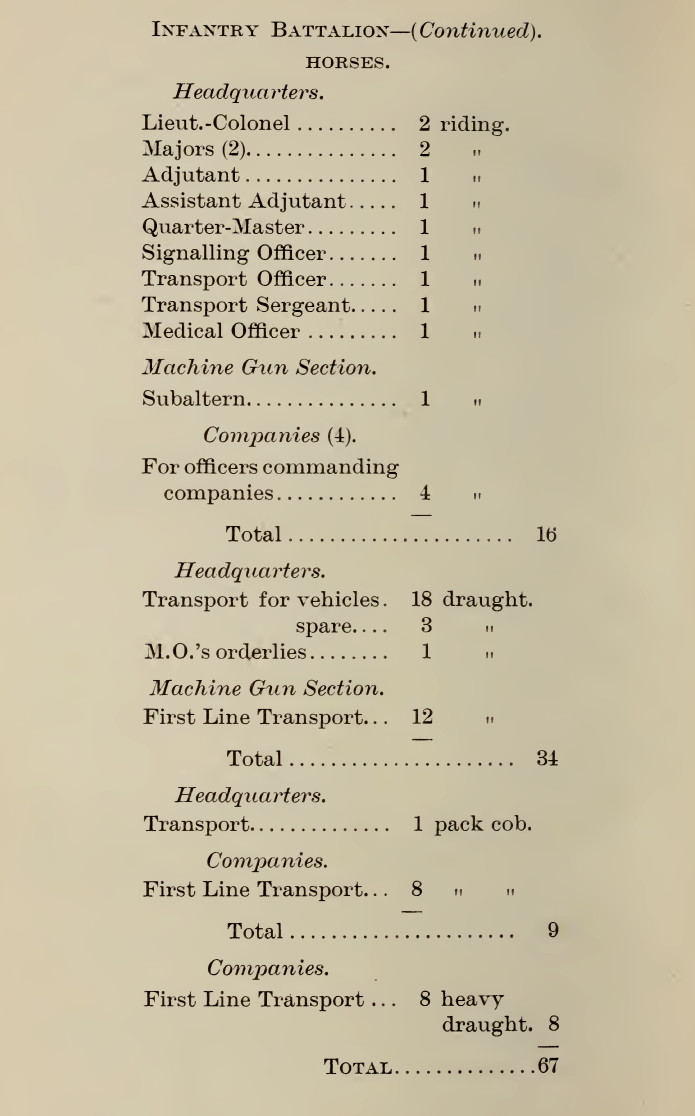
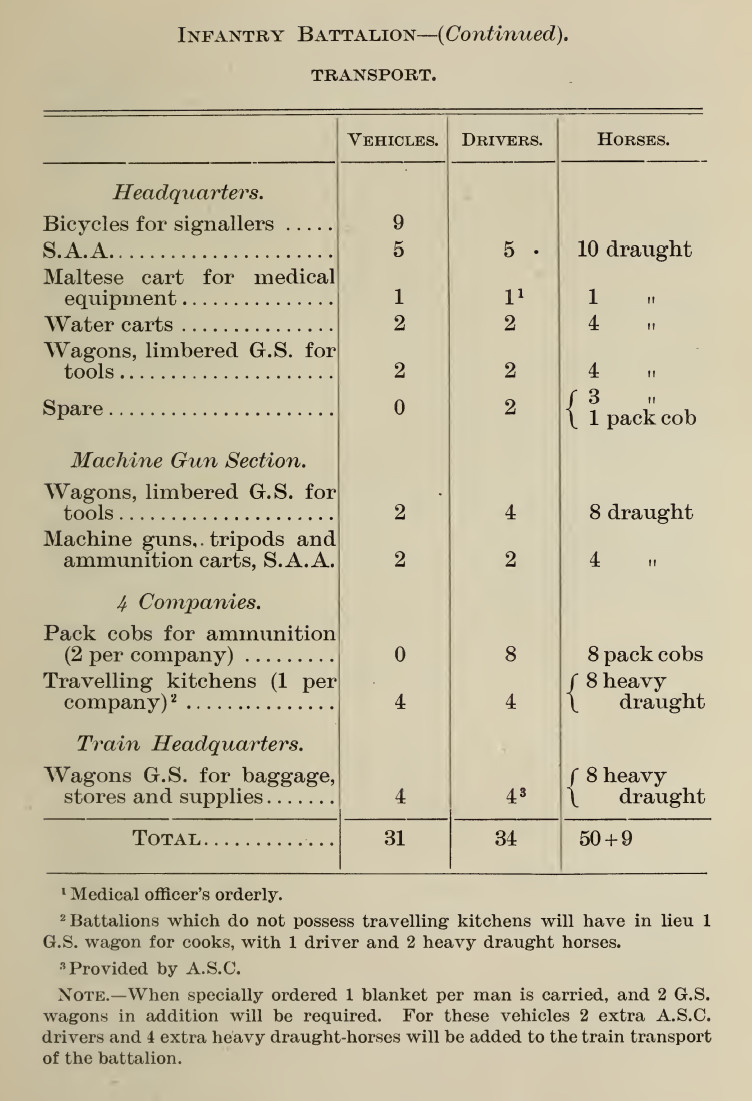



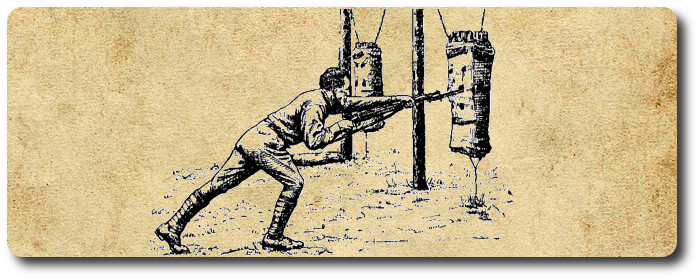
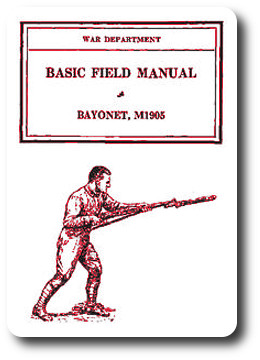 Washington, Sept. 20.—The General Staff of the army is hard at work on the new manuals for the sabre and the bayonet for the army. Hitherto these manuals have called for much skill on the part of enlisted men, so much, indeed, that few of them can acquire the art of wielding either weapon in a satisfactory manner. It is proposed to omit from the manuals everything of a fancy fencing character, such as is taught in the private drillrooms. It is intended that there shall be a return to the simplest methods, and that everything shall be on the most practical and useful basis. Both weapons are meant for use in time of war, and especially is this so of the bayonet. The officers who have been on duty in Manchuria with the Russian and Japanese armies are furnishing special reports to the General Staff on the subject, and such experts as Captain Herman J. Koehler, the master of the sword at the Military Academy, and Civil Engineer Cunningham, of the navy, who is an expert swordsman, and who had charge of the Naval Academy fencing last year, are also giving valuable advice along the line indicated. The War Department recently adopted a new type of sabre, which will be kept with a sharpened edge and carried in a wooden scabbard. A new bayonet was adopted several weeks ago, based on the results of the observations of our military attaches with the troops in Manchuria. The sabre and bayonet are therefore of fighting value, and the manual will be of a kindred practical spirit.
Washington, Sept. 20.—The General Staff of the army is hard at work on the new manuals for the sabre and the bayonet for the army. Hitherto these manuals have called for much skill on the part of enlisted men, so much, indeed, that few of them can acquire the art of wielding either weapon in a satisfactory manner. It is proposed to omit from the manuals everything of a fancy fencing character, such as is taught in the private drillrooms. It is intended that there shall be a return to the simplest methods, and that everything shall be on the most practical and useful basis. Both weapons are meant for use in time of war, and especially is this so of the bayonet. The officers who have been on duty in Manchuria with the Russian and Japanese armies are furnishing special reports to the General Staff on the subject, and such experts as Captain Herman J. Koehler, the master of the sword at the Military Academy, and Civil Engineer Cunningham, of the navy, who is an expert swordsman, and who had charge of the Naval Academy fencing last year, are also giving valuable advice along the line indicated. The War Department recently adopted a new type of sabre, which will be kept with a sharpened edge and carried in a wooden scabbard. A new bayonet was adopted several weeks ago, based on the results of the observations of our military attaches with the troops in Manchuria. The sabre and bayonet are therefore of fighting value, and the manual will be of a kindred practical spirit.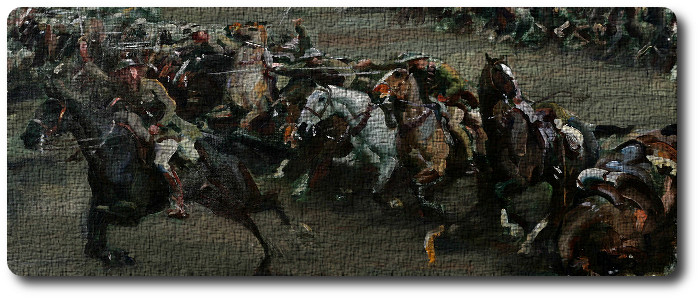
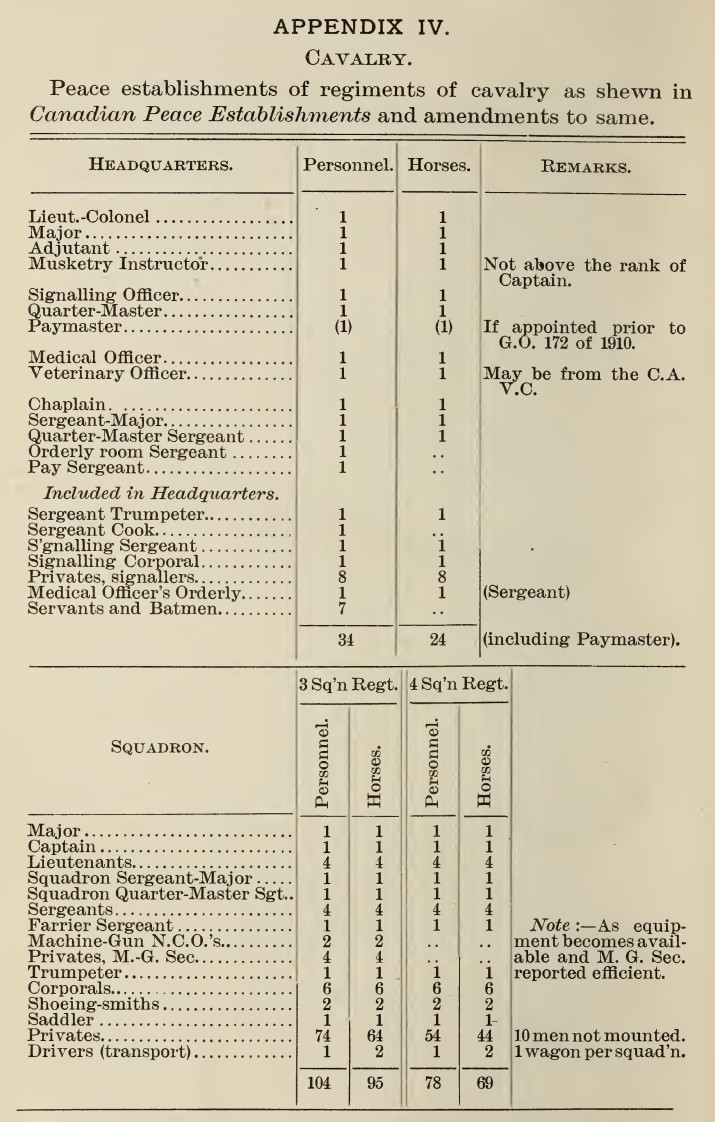

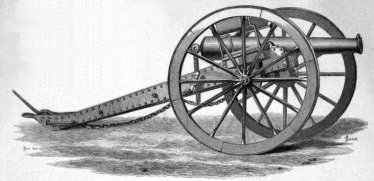 Designation.—Ordnance, wrought Iron rifled, M.L. 9 Pr. 8 cwt.
Designation.—Ordnance, wrought Iron rifled, M.L. 9 Pr. 8 cwt.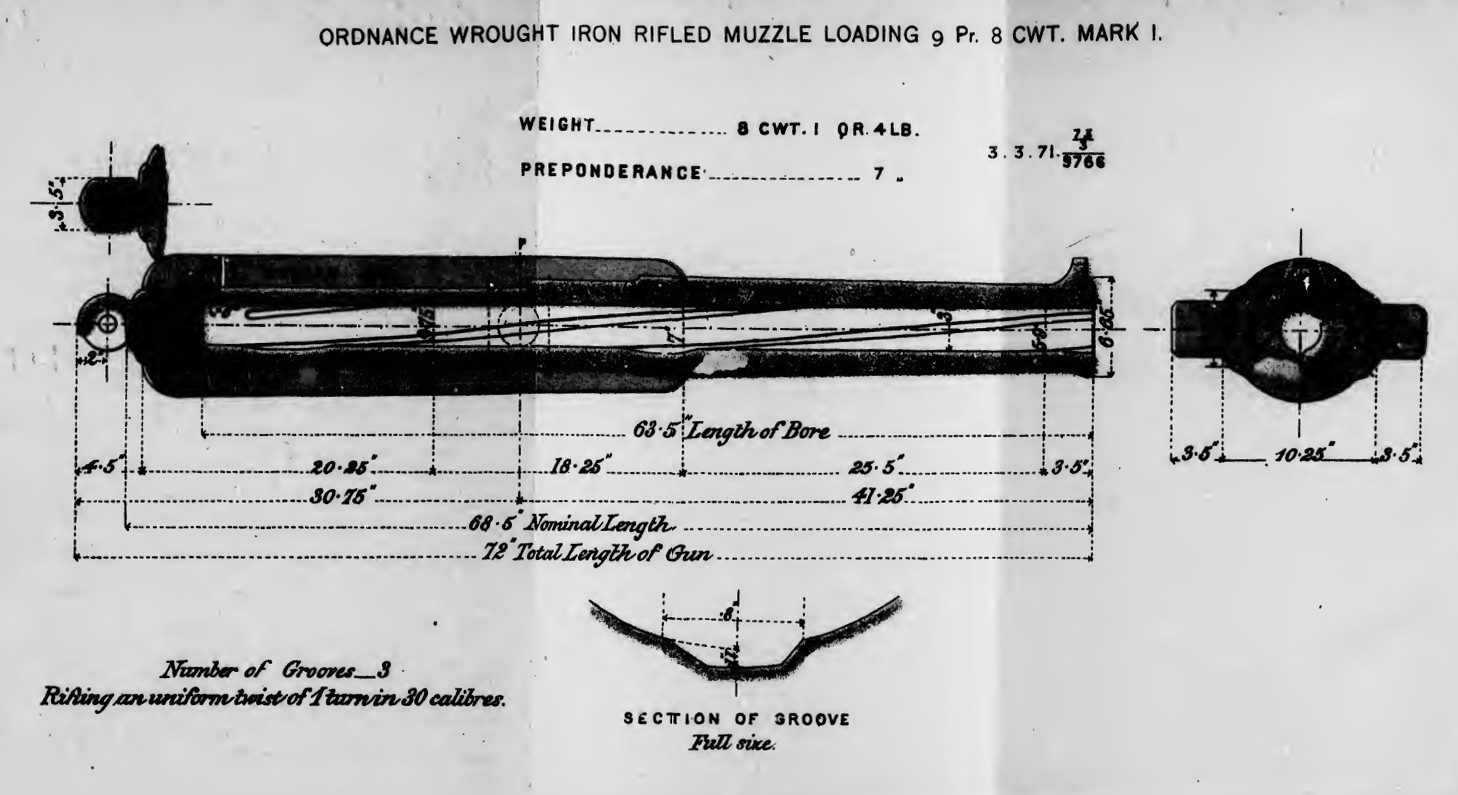

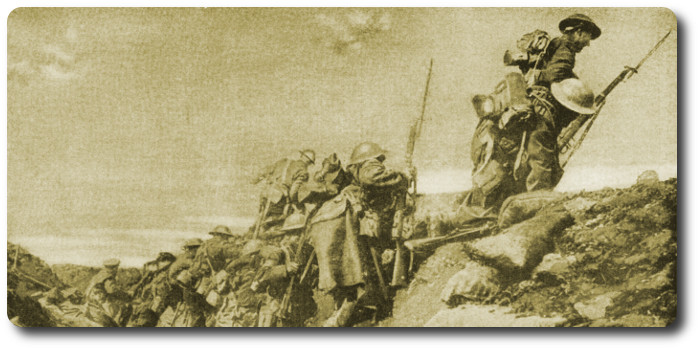
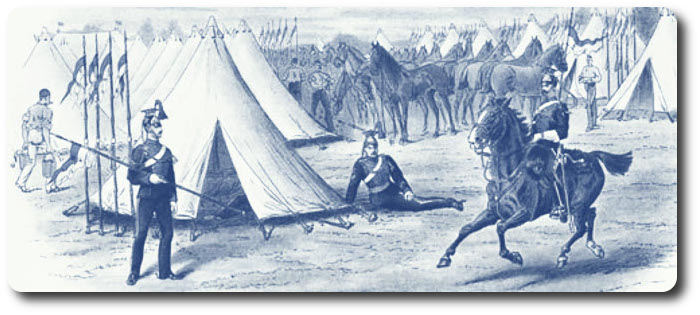
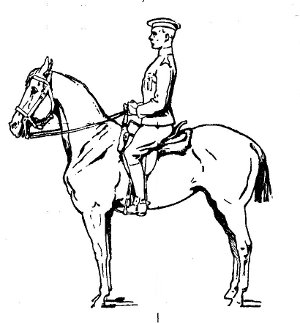 Cavalry.—The horse moves 400 yards at a walk, in about 3.9 minutes; at a trot in about 2 minutes; at a gallop in 1.4 minutes. His stride in walking is about 0.917 yards; at a trot 1.23 yards; at a gallop 3.52 yards. He occupies in the ranks 3 feet; in file 9 feet; in marching 12 feet. The heavy dragoon horse actually carries 270 pounds; if provided with one day's rations, 296 pounds, The light cavalry horse carries from 250 to 260 pounds, rations included. A cavalry horse should weigh about 1,000 pounds; height about 15.3 hands; girth round chest 80 inches. A day's rations for a horse is 10 pounds oats, 12 pounds hay, and 8 pounds straw in stable; 8 pounds oats, 18 pounds hay, 6 pounds straw, in billets; 32 pounds hay where no oats or bran are given; 9 pounds of oats are equal to 14 pounds bran. He will drink about 7 gallons of water daily. A horse should not be watered too early in the morning in cold weather. Horses' backs should be examined closely on saddling and unsaddling the least flinching should be taken notice of, and hot fomentations applied constantly. Kicks and contusions should be treated by hot fomentations, poultices, and cold water. A dose of physic may be necessary, depending on extent of tumefaction and pain. Sprains should be fomented; a dose of physic given, and cold water bandages applied. Cough and cold: soft diet, a fever ball with a little nitre; stimulate or blister the throat, if sore. If bleeding is necessary, rub the neck on the near side close to the throat, until the vein rises; to keep it full, tie a string round the neck, just below the middle; strike the fleam into the vein smartly, with a short stick. If the blood does not flow freely, the blow being properly struck, it may be made do so by holding the head well up, and causing the horse to move its jaws. After a march, first take off the bridles, tie up horses by headstall chains; loosen girths, turn up crupper and stirrups; sponge nostrils and eyes, and rub the head with a dry wisp; pick and wash feet, and give hay; wipe bit and stirrups. After the men have had their meal, saddles are taken off and the horses cleaned, watered, fed, and bedded. Upon the vigour with which grooming is performed, greatly depends the condition of the horse, when exposed to fatigue or exposure to the weather. Hand rubbing the legs and ears, not only till they are dry, but until the blood circulates freely, should be particularly observed.
Cavalry.—The horse moves 400 yards at a walk, in about 3.9 minutes; at a trot in about 2 minutes; at a gallop in 1.4 minutes. His stride in walking is about 0.917 yards; at a trot 1.23 yards; at a gallop 3.52 yards. He occupies in the ranks 3 feet; in file 9 feet; in marching 12 feet. The heavy dragoon horse actually carries 270 pounds; if provided with one day's rations, 296 pounds, The light cavalry horse carries from 250 to 260 pounds, rations included. A cavalry horse should weigh about 1,000 pounds; height about 15.3 hands; girth round chest 80 inches. A day's rations for a horse is 10 pounds oats, 12 pounds hay, and 8 pounds straw in stable; 8 pounds oats, 18 pounds hay, 6 pounds straw, in billets; 32 pounds hay where no oats or bran are given; 9 pounds of oats are equal to 14 pounds bran. He will drink about 7 gallons of water daily. A horse should not be watered too early in the morning in cold weather. Horses' backs should be examined closely on saddling and unsaddling the least flinching should be taken notice of, and hot fomentations applied constantly. Kicks and contusions should be treated by hot fomentations, poultices, and cold water. A dose of physic may be necessary, depending on extent of tumefaction and pain. Sprains should be fomented; a dose of physic given, and cold water bandages applied. Cough and cold: soft diet, a fever ball with a little nitre; stimulate or blister the throat, if sore. If bleeding is necessary, rub the neck on the near side close to the throat, until the vein rises; to keep it full, tie a string round the neck, just below the middle; strike the fleam into the vein smartly, with a short stick. If the blood does not flow freely, the blow being properly struck, it may be made do so by holding the head well up, and causing the horse to move its jaws. After a march, first take off the bridles, tie up horses by headstall chains; loosen girths, turn up crupper and stirrups; sponge nostrils and eyes, and rub the head with a dry wisp; pick and wash feet, and give hay; wipe bit and stirrups. After the men have had their meal, saddles are taken off and the horses cleaned, watered, fed, and bedded. Upon the vigour with which grooming is performed, greatly depends the condition of the horse, when exposed to fatigue or exposure to the weather. Hand rubbing the legs and ears, not only till they are dry, but until the blood circulates freely, should be particularly observed. 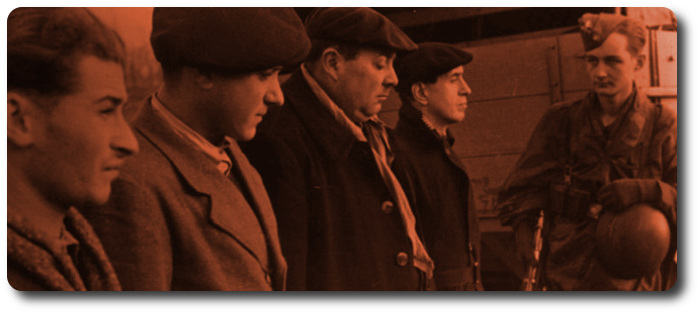
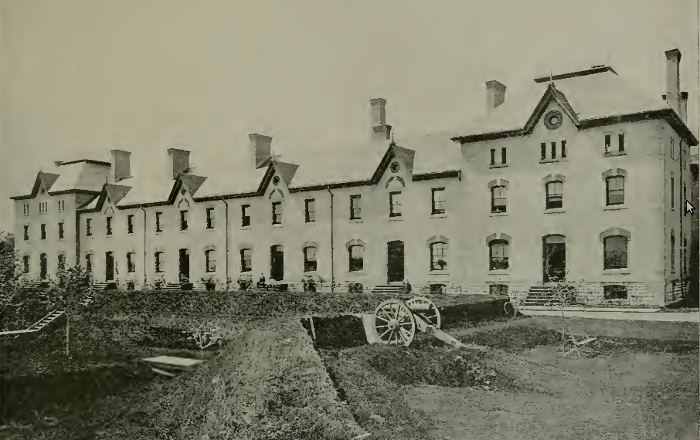

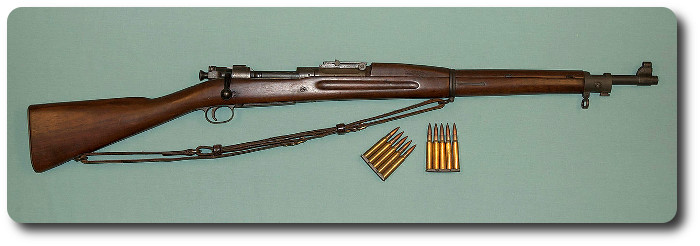
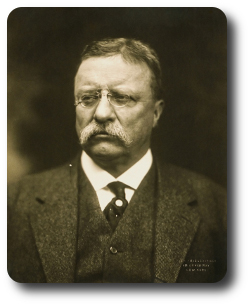 Boston Evening Transcript, 20 April 1905
Boston Evening Transcript, 20 April 1905
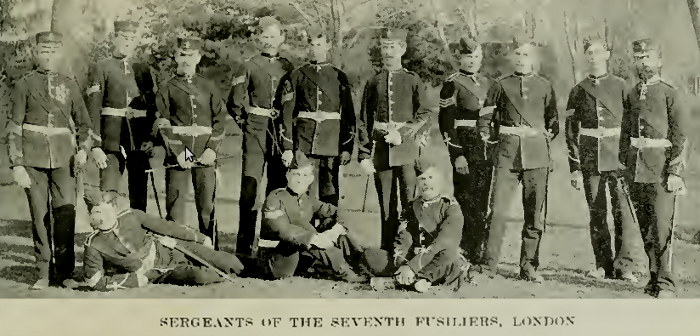
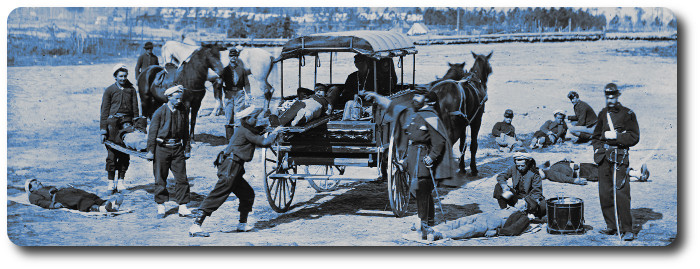
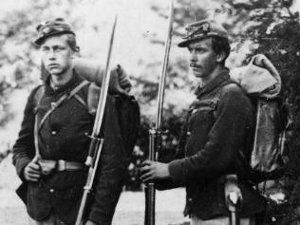 One of the most valuable contributions to the progress of medical science is undoubtedly the series of volumes recording "
One of the most valuable contributions to the progress of medical science is undoubtedly the series of volumes recording "